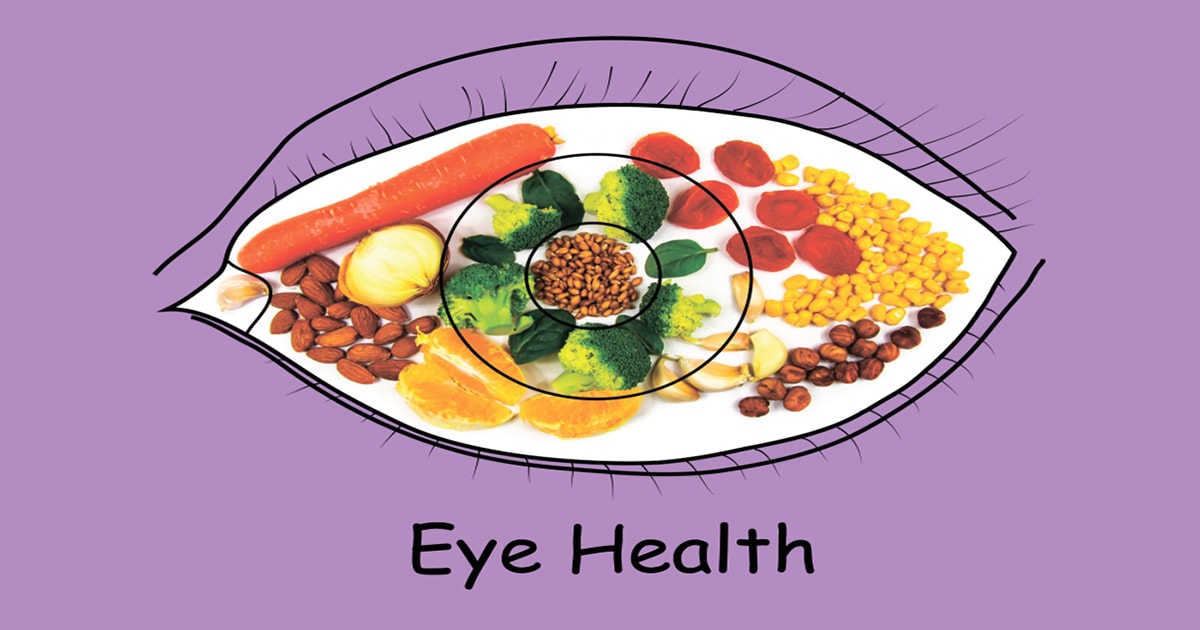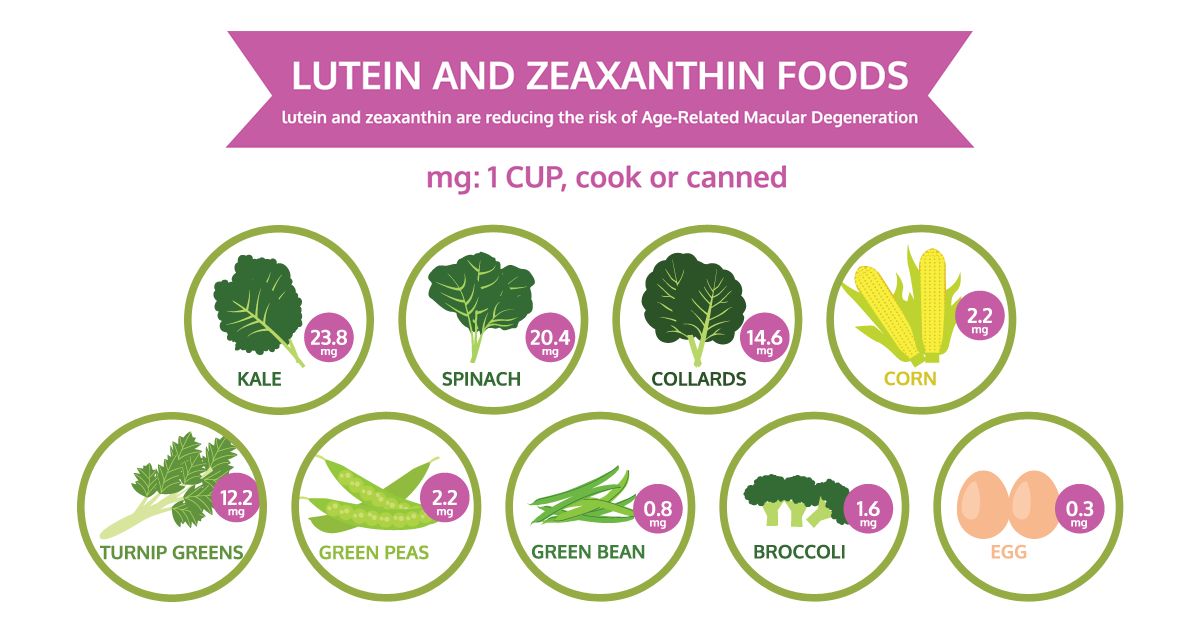Omega-3 is a type of fatty acid — a building block of fat. Omega-3s are called essential fatty acids because people need them, but the human body can’t produce them. Instead, essential fatty acids are consumed through foods and supplements.
It might sound strange, but fat is crucial to your health. Without fat, your body can't work properly.
Cells, muscles, nerves and organs need fatty acids to work correctly. The hormone-like compounds that help regulate blood pressure, heart rate and blood clotting also rely on fatty acids.
Without “good fats” like omega-3 in your diet, your eye health may suffer too.
Omega-3s and omega-6s are both essential fatty acids. While omega-6 foods are often tagged as being unhealthy, that might actually be a bit misleading. But they still need to be balanced with their omega-3 counterparts.
Studies show, however, that it’s omega-3 that may offer the most benefit for your eyes.
Omega-3 benefits
When an essential fatty acid becomes a household name, it must be important.
The National Institutes of Health (NIH) has data to suggest omega-3s may have a positive impact on the following conditions:
- Heart and blood-vessel disease
- Dementia
- Alzheimer’s disease
- Cancer prevention
- Rheumatoid arthritis
- Infant development
Eye benefits
In adult eyes, studies suggest omega-3 fatty acids may help protect from:
- Macular degeneration
- Dry eye syndrome
- Glaucoma
Omega-3s come in three forms: ALA, DHA and EPA. Studies suggest that our eyes may benefit most from a diet high in fish-friendly EPA and DHA — especially DHA.
Macular degeneration
In one study, participants who ate oily fish — a great source of DHA and EPA — at least once per week had half the risk of developing wet macular degeneration, compared to those who ate fish less than once per week.
Macular degeneration is a condition that causes gradual vision loss in the center of your field of view.
A National Eye Institute study, which used data from the Age-Related Eye Disease Study (AREDS), found that the participants who reported the highest level of omega-3 fatty acids in their diet were 30% less likely than their peers to develop macular degeneration over a 12-year period.
In 2013, the Institute published results of a follow-up to the original AREDS study called AREDS2. The study surprisingly showed that participants who supplemented their diet with 1,000 mg of omega-3s daily (350 mg DHA, 650 mg EPA) did not show a lower risk for macular degeneration over five years.
These findings could suggest that omega-3s are more effective at reducing the risk of age-related eye diseases when you get them through food, instead of a nutritional supplement.
Also, a healthy diet containing plenty of omega-3s along with other important nutrients consumed over a person's lifetime is likely more protective than taking nutritional supplements for a five-year period.
Dry eye
Omega-3 has also been found to reduce the risk of dry eye syndrome.
In a study of more than 32,000 women between the ages of 45 and 84, those with the highest ratio of omega-6s to omega-3s in their diet (15-to-1 ratio) had a significantly higher risk of developing dry eye syndrome, compared with the women with the lowest ratio (4-to-1 ratio or less).
The study also found that the women who ate at least two servings of tuna per week had far less risk of dry eye than women who ate one or fewer servings per week.
Omega-3 fatty acids may also help treat dry eyes. In a study of mice, direct application of the omega-3 fatty acid ALA led to fewer dry eye signs and less inflammation associated with dry eye.
Glaucoma
Essential fatty acids may also help the fluid inside the eye drain properly and lower the risk of glaucoma, which can happen when inner eye pressure is too high.
During one study, rats were fed a combination of safflower, flaxseed and tuna oils — all high in omega-3s. The results showed that the diet helped regulate the outflow of the eye’s inner fluid, a critical part of preventing high eye pressure and, eventually, glaucoma.
Interestingly, results in rats that were fed only safflower oil (high in ALA, but not EPA or DHA) weren’t nearly as positive as the results in rats that were also fed flaxseed and tuna oil — a combination that’s high in all three types of omega-3.
SEE RELATED: The benefits of vitamin E
Omega-3s and vision development in babies
Several clinical studies have shown that omega-3 fatty acids are essential for normal infant vision development.
DHA and other omega-3s are found in maternal breast milk and are also added to some infant formulas.
According to a Pediatrics journal analysis of studies conducted by the Harvard School of Public Health, the authors found that healthy preterm infants who were fed DHA-supplemented formula showed significantly better visual acuity (sharpness) at 2 and 4 months of age, when compared with similar infants who were fed formula without the omega-3 supplement.
Adequate amounts of DHA and other omega-3s in the diet of pregnant women also appear to be important in normal infant vision development.
In another study, Canadian researchers found that infant girls whose mothers received DHA supplements from their fourth month of pregnancy until delivery were less likely to have below-average visual sharpness at 2 months of age, compared to infant girls whose mothers did not receive the omega-3 supplements.
Foods high in omega-3
Both omega-3 and omega-6 fatty acids play a role in your health, but it’s important to keep the two balanced.
Most experts believe the ratio of omega-6 to omega-3 fatty acids in a healthy diet should be 4-to-1 or lower.
Unfortunately, the typical American diet often contains 10 to 30 times more omega-6 than omega-3 fatty acids.
This imbalance of omega-3s (good) and omega-6s (not as good) appears to contribute to a higher risk of serious health problems, such as heart disease, cancer, asthma, arthritis and depression.
One of the best steps you can take to improve your diet is to eat more foods that are rich in omega-3s and fewer foods that are high in omega-6s.
High omega-3 foods include:
- Cold-water fish
- Ground flaxseeds
- Flaxseed oil
- Walnuts
- Chia seeds
- Soybeans
- Tofu
- Soy oil
- Canola oil
Note that, while there are several great vegetarian sources of omega-3, your body can’t process their ALA fatty acids as easily as the EPA and DHA versions of omega-3 found in fish.
READ MORE: Vitamin C and your eyes
Adding more fish to your diet
Cold-water fish are usually high in both DHA and EPA.
The American Heart Association recommends at least two servings of fish every week (preferably “fatty” fish) to reduce the risk of cardiovascular disease. Sticking to two servings may also reduce the risk of developing the eye problems listed above.
If you have the option, wild-caught fish are often better than "farmed" fish, which tend to have higher levels of pollutants and chemicals in their meat.
Which fish are high in omega-3?
One type of fish can have many times higher omega-3 content than another type. To maximize these fatty acids, look for the following fish:











